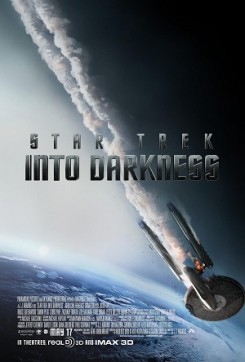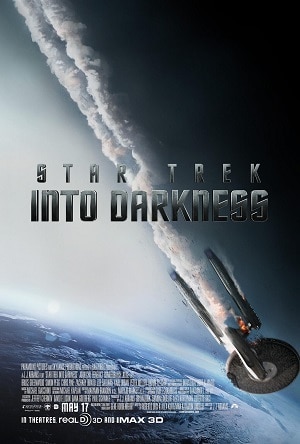Star Trek: Into Darkness, J.J. Abrams’ second venture into the world of Trek, features questionable science amid political commentary and references to classic Trek movies (ED: Major spoilers for the film follow). Chris Pine and Zachary Quinto reprise their roles as Kirk and Spock in the film, which follows a divided Starfleet chasing a terrorist through the galaxy. The villain is none other than Kirk’s arch-rival, Khan (seen most famously in Star Trek II: The Wrath of Khan), played by Benedict Cumberbatch. Throughout the pursuit, the protagonists grapple with their motivation, weighing the costs of justice and of revenge.
 The technology of Into Darkness is purely utilitarian: it does not play an integral role in the plot, which focuses more on the personal struggles of the characters. Some of this technology is standard in the Star Trek universe; transporters and warp drive, at this point scientifically dubious, are nothing new on the screen. Into Darkness also contains references to recent developments in science and technology: stellar scenery is reminiscent of images from the Hubble Space Telescope, and spacesuits contain head-mounted visual displays that echo Google Glass technology.
The technology of Into Darkness is purely utilitarian: it does not play an integral role in the plot, which focuses more on the personal struggles of the characters. Some of this technology is standard in the Star Trek universe; transporters and warp drive, at this point scientifically dubious, are nothing new on the screen. Into Darkness also contains references to recent developments in science and technology: stellar scenery is reminiscent of images from the Hubble Space Telescope, and spacesuits contain head-mounted visual displays that echo Google Glass technology.
Other technology in the film stretches the limits of scientific plausibility. Spock beams down to the center of an active volcano and uses a cold fusion device to render the volcano inert. It sounds good — except that cold fusion doesn’t make things cold. It does not even work. Cold fusion, if it is real technology, would more likely turn the volcano into a nuclear reactor than into stone.
The controversial field of cryogenics attracts people who hope to attain immortality. There are a host of biological, ethical, and religious issues involved with storing and reviving a human body: the term “cryogenic sleep” is nothing more than a euphemism. However, in Star Trek’s 23rd century, cryogenic practices are common. Khan regains consciousness after being cryogenically preserved, and his blood, the miracle serum, does not lose any potency. More questionable is the use of Khan’s blood as a panacea. The platelets in his blood raise a tribble from the dead and cure a young girl on her deathbed. Later, Khan’s blood revives Kirk , who suffers from excess radiation. Such a versatile cure that heals all ailments and all species is not scientifically plausible.
The storyline of Into Darkness is very similar to that of The Wrath of Khan. However, there is a subtle difference between the two films. The crew of the Enterprise in The Wrath of Khan chase Khan around the galaxy in order to keep a dangerous weapon out of his hands. In Abrams’ reboot however, the crew’s focus is different. As in The Wrath of Khan, their goal is to stop a terrorist, but keeping harmful technology out of Khan’s hands is not their motivation.
The primary conflict of the film is not saving the galaxy, but rather maintaining personal moral integrity. The benefits and costs of scientific advances are not weighed in Into Darkness. Science is a neutral entity. This allows the spotlight, and the lens flare, to remain on the moral conflicts faced by the film’s protagonists.


